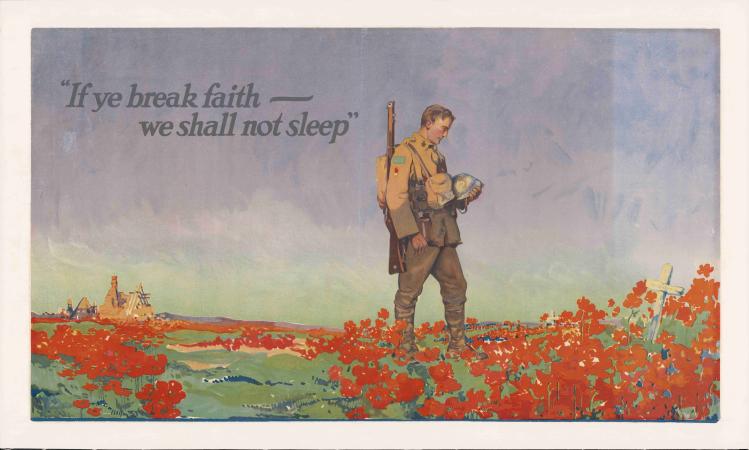Nowadays the poster does not play a leading role anymore in attracting the public. This used to be quite a different story in the previous century. The first posters with text and images were printed in the second half of the nineteenth century in Paris. By the 1890s, the technique of color lithography had spread throughout Europe. In the years before the First World War the poster also became a favorite outlet for modern artists. Just look at the obvious example of the designs made by Jan Toorop for the Delft Salad Oil factory. These beautiful art nouveau posters with decorative women with curly long hair have become iconic.
Collector and Notary Martijn F. Le Coultre saw the beauty of the poster when he was in his teens and from that moment on started to build up his immense collection. In an interview he shares: “I still find posters that I cannot resist. There are also posters that suddenly pop up out of nowhere that are of breathtaking beauty or significance.” His focus went towards posters with a cultural or historic impact. He realized that product posters tell the story of the consumption of the masses and with that the story of the Twentieth Century. Political posters tell the other side of the story of war, peace and protest movements. “Just last week I bought a German WW I propaganda poster showing the channel tunnel. That tunnel was not completed until 1994 but the poster dates from 1914 or ’15.”
Le Coultre recently came to the Peace Palace to talk about the poster as an instrument of communication in World War I. World War I meant an important new role for the poster: propaganda. The posters produced during the war were part of the largest military campaign ever. They were used raising money for the war, get young men to enlist, provoking enemy states but also to support the wounded soldiers. The main intention was to bring the public closer to the war. Millions of posters were produced by the nations that were involved in the War. Although the United States was involved in the war only by 1917, this country alone produced 2500 poster designs and approximately 20 million posters.
In the Main Hall of the Peace Palace a selection of World War I posters from the collection of the Library is on display. The variety of posters on display show us the different approaches used by the countries using the poster as an instrument of the propaganda machine. But it also is interesting just to look at the variety in designs. For example, Germany produced posters with bold imagery and a clear message and France had an obvious tradition of art posters clearly seen in their decorativeness. Most of the posters on display in the hall of the Peace Palace show that the text written on the posters was a dominant factor and increased the effectiveness of the message. The beauty of the design was not as important. Although there certainly are exceptions.
In the exhibition at the Peace Palace a wonderful poster by Alfred Ost (1884-1945) is on display. The poster is a depiction of a soldier on a staggering horse expressing so much liveliness and strength. Ost was a Belgian artist who stayed in The Netherlands during World War I. He was very much emotionally connected to the Belgian soldiers. During the war he made several designs to support the Belgians such as this striking poster produced for an exhibition organised in Breda for the wounded and imprisoned Belgian soldiers. After the wary Ost continued his work as an artist in Belgium. It is hard to pigeon hole Alfred Ost in art history as he was very versatile and worked in different styles, but he clearly was a (undervalued) talented artist.
Image: Alfred Ost, Exposition de Tableaux au profit des Blessé's et Prisonniers de Guerre Belges, 1917.
About Alfred Ost: Vlaanderen. Jaargang 33. Christelijk Vlaams Kunstenaarsverbond, Roeselare 1984.
Interview Martijn Le Coultre: Masterpieces of Poster Art in Printmag, September 10, 2013.
Peace Palace World War I Exhibition: 14 November 2014 - 12 January 2015.
